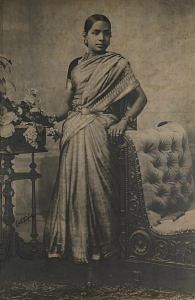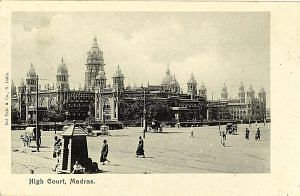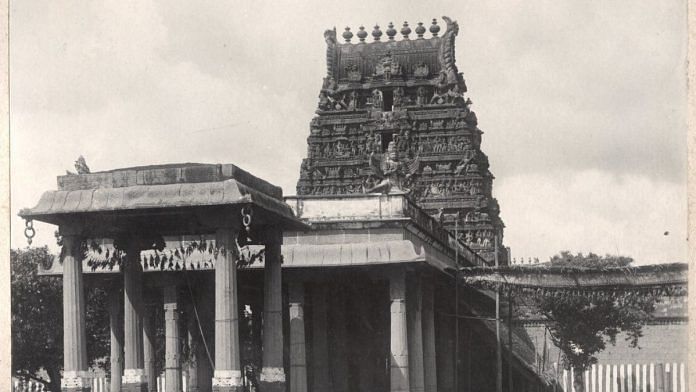An early-twentieth-century commercial photographic studio specialising in portraits, Del Tufo & Co was set up in Colombo, Ceylon (now Sri Lanka), as well as various locations in southern India. It was established c. 1900 in both Colombo and Madras (now Chennai), India, by the Italian photographers Innocenzo del Tufo (1844–1912) and his wife Inez Maria Gibello (1876–1952), the latter of whom went on to achieve prominence as a documentary photographer herself.
The studio subsequently established branches in Bangalore (now Bengaluru) and Ootacamund (now Ooty) in India, alongside those of other prominent studios of the time. It primarily provided individual and group portraiture services to military personnel as well as affluent civilians, and announced itself with a storefront sign claiming the proprietors to be ‘Photographers by Special Appointment to the King of Italy’.
Though the veracity of this claim has not been established, it ostensibly gave the studio an edge in the increasingly competitive arena of studio photography at the time.

Besides its standard photographic offerings, which included developing and enlarging negatives, it provided services such as hand-finishing and retouching of photographs using pencil and paints, and repairing wooden components of cameras. The studio mounted its portrait prints into cabinet cards, which had replaced the smaller carte de visite format by the late nineteenth century; meanwhile, the landscapes and archaeological views that the studio produced in smaller numbers, took the form of postcards.

Also read: ATW Penn–British photographer who captured 19th-century South India in his portraits
Following the death of Innocenzo in 1912, Inez Maria became the sole owner of the studio and renamed it Madame Del Tufo in 1914. She undertook personal photography projects as well as commercial studio work under this name. Born to an Italian merchant in Kutch in western India, she established herself as one of the early women photographers in Ceylon, becoming renowned for her extensive photographic documentation of houses in the city. As a result of this phase of Inez Maria’s career, she and the firm are still closely associated with Sri Lanka, possibly more so than with Madras or India. The studio closed by 1930, and Inez Maria died in 1952.
Photographs produced by the studio were shown at the 2015 exhibition Imaging the Isle Across, curated by The Alkazi Foundation for the Arts and shown at the National Museum, New Delhi; as well as the Spectacular: Cities and People exhibition as part of the 2019 edition of the Krishnakriti Festival, Hyderabad.
This article is taken from the MAP Academy‘s Encyclopedia of Art with permission.
The MAP Academy is a non-profit, open-access educational platform committed to building equitable resources for the study of art histories from South Asia. Through its freely available digital offerings—Encyclopedia of Art, Online Courses, and Stories—it encourages knowledge-building and engagement with the visual arts of the region.



